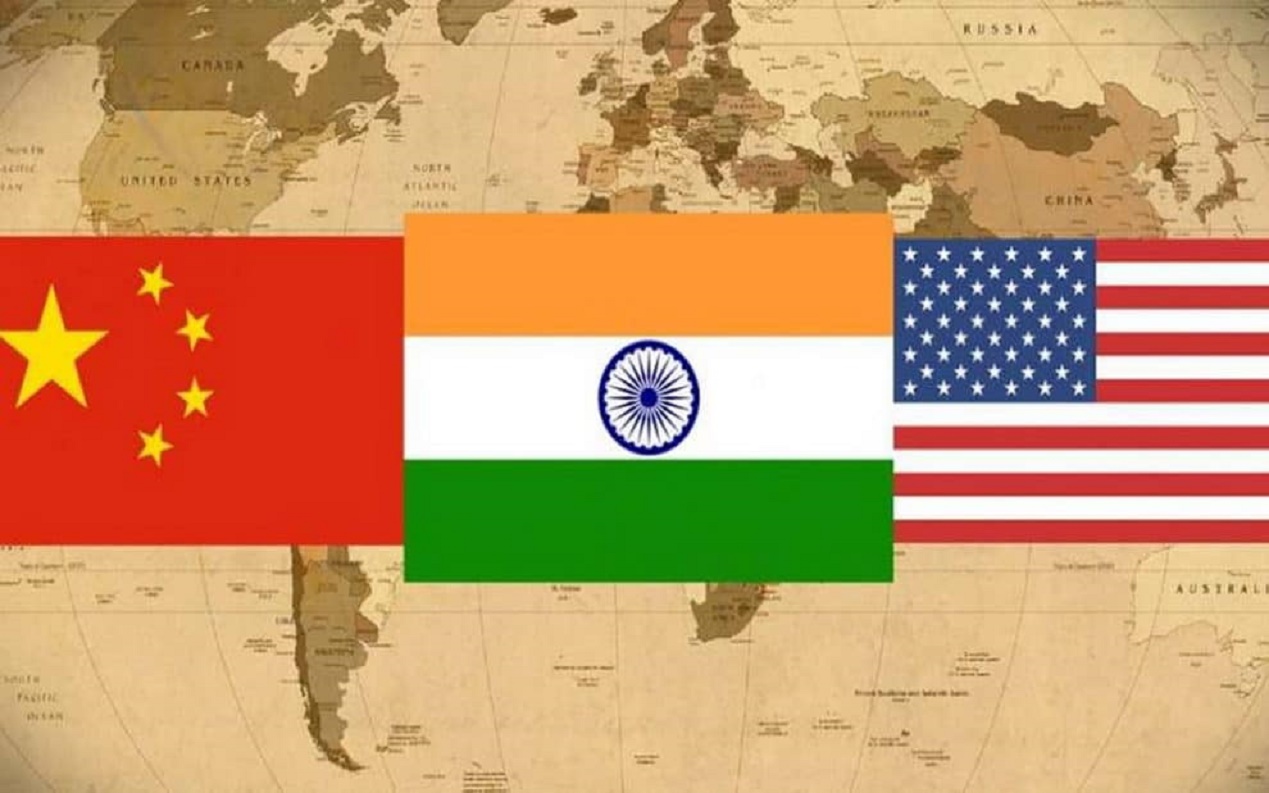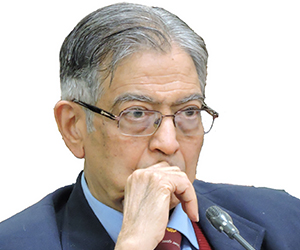The deterioration in China's relations with the USA and India have not entirely uncoincidentally been accompanied by the blossoming of ties between the latter. Nevertheless, as India looks down the barrel of a military confrontation with China, as a consequence of the latter's aggression in Ladakh, there has been some scepticism in the country of the military support that it can bank upon from the USA. This is essentially based on the legacy of long standing suspicions about the USA the latter's history of letting down friends, and fears that a change of Administration would lead to a drastic change of tack on its China policy. Whether or not such scepticism is warranted demands a rigorous examination which must take note equally of the heights to which US- India military ties have soared and the depths to which US -China relations have plummeted.
Before delving into any such exercise it is given that in any military engagement with China or indeed any other country, India will not seek US boots on the ground as done by Nehru in 1962. Today's India does not require and will not ask anyone to fight its wars. India’s expectations would be more modest and be limited to looking for diplomatic support, intelligence sharing, military supplies, and possibly naval deployments in the Pacific to constrain Chinese deployments in the Indian theatre.
Since the turn of the century the pace in evolution of India-US military ties has been impressive. In the period 2008-2018 Indian imports of US military equipment have escalated to around $18 billion1 from the earlier abysmally low levels and many additional imports are on the anvil. Additionally, the two countries conduct more bilateral military exercises with each other than with any other country and have developed a robust arrangement of multifaceted dialogue between their militaries. India has also signed three of the four foundational agreements with the USA. The fourth notably the Basic Exchange and Cooperation Agreement (BECA) is expected to be concluded shortly. These agreements will enable the smooth interoperability of the forces of the two countries. Furthermore, India was designated by the USA as a " Major Defence Partner" in December 2016 and as a result thereof in 2018 was moved into Tier-1 of the US Department of Commerce’s Strategic Trade Authorisation license exception which enables it to access the most sensitive of US weapon systems and technologies available to only the latter's closest partners. It is no surprise therefore; that there have been media reports that the US has agreed to provide armed predator drones to India. Indeed, Foreign Policy reported that the US was looking to ramp up arms sales to India and laid the groundwork for them "that go above and beyond what previous administrations considered, including longer-term weapons systems with higher levels of technology and sophistication, such as armed drones."2
It is no secret that with the advent of the Trump administration Sino US ties have been on a sharp downward trend. While initially tensions between China and the USA took the form of a trade war today these are all encompassing. The strains in Sino-US relations are rooted in the fact that for all his failings Trump more than any of his predecessors was quick to realise that China posed a grave threat to the US. This was articulated in the December 2017 National Security Strategy document put out by the US government which asserted that "China and Russia want to shape a world antithetical to U.S. values and interests. China seeks to displace the United States in the Indo-Pacific region, expand the reaches of its state-driven economic model, and reorder the region in its favour."
Since then the deterioration of Sino US ties has escalated and the divide betwixt the two appears unbridgeable. This is borne out by the fact that through June and July 2020 the US FBI chief, NSA, Attorney General, and Secretary of State made no holds barred and highly critical speeches against China detailing its perfidy, underlining the dangers it posed to the USA and indeed to the world, trashing the earlier policies of "blind engagement" with China facilitating its rise, and vowing that there must be no return to them. The following are some notable takeaways from each of their speeches:
- The NSA asserted that China's ambitions for ideological control were not merely internally focussed but extended beyond its borders and dwelt on how it was so doing through aggressive propaganda, economic pressure, and massive data collection on individuals often illegally, if not by outright theft, in order to influence.
- The FBI chief contended that the most serious long term threat to US information and intellectual property as well as to its economic vitality emanated from Chinese espionage which posed a threat to US economic and national security. He further argued that China was seeking to displace the US in economic and technological supremacy "not through fair and lawful competition” but by any means necessary through a "whole-of-state effort".
- The Attorney General made out that China had launched a blitzkrieg to seize the commanding heights of the global economy and lamented that it had overtaken the US in manufacturing over a decade ago and that the latter was now dangerously dependent on it for many products. In a blistering attack on China's trade practices and policies he underlined that free and fair competition with China had long been a "fantasy" as it engaged in many predatory and often unlawful tactics like currency manipulation, state led strategic investment and acquisitions, theft and forced transfer of intellectual property, state subsidies, industrial espionage etc.
- The Secretary of State suggested that the only way to truly change communist China is to act not on the basis of what Chinese leaders say, but how they behave. Accordingly, in dealing with China one must insist on reciprocity, transparency and accountability. He felt that the China challenge could best be addressed through the collective power of several countries and speculated that it was perhaps time for "a new grouping of like-minded nations, a new alliance of democracies"
- Accompanying this verbal onslaught on China, the USA sanctioned Chinese officials for human rights abuses, blacklisted Chinese companies, arrested Chinese spies, ended special privileges for Hong Kong, rubbished China's claims in the South China Sea, condemned their actions in Ladakh and claims on Bhutan, closed China’s consulate in Houston, and sent its Secretary of Health on an official visit to Taiwan ---the first such high level visit in decades.
In view of the foregoing it would not be illogical to conclude that US military support for India would be more or less a given under a Trump dispensation in the event of a Sino Indian conflict. With the impending US elections in November one must, however, also assess the likely stance of a Biden Administration on this issue.
At first blush, the softer Democratic line on China in the past could lead one to feel that a Biden Administration would be reluctant to be as supportive of India as a Trump Administration. However, much has changed over the past year. In an article titled "Team Biden's Policies on China and Taiwan" in the Diplomat it is suggested that there has been a "tectonic shift" in Biden's approach to China which has become much tougher particularly in regard to China's human rights violations and its strategic competition with the USA.3 Indeed during the Democratic presidential primaries, Biden referred to Xi Jinping as a “thug” for having “a million Uyghurs in ‘reconstruction camps’ [sic] meaning concentration camps.” He has also been highly critical of China’s new national security law in Hong Kong and was one of the first prominent U.S. politicians to congratulate Taiwan’s President Tsai Ing-wen on her election win and inauguration.4
The harder Democratic position on China should come as no surprise as opinion in the US has decisively turned against it. According to a recent Pew survey two-thirds of Americans currently hold a negative view of China, compared to 47 percent in 2017. Indeed, more Americans have a negative attitude towards China today than at any other point since 2006, when Pew began tracking this question.5 In these circumstances, the USA, whether under Trump or Biden, is likely to provide military support to India against China should the need arise. Above all, if a Democratic President could come to the support of a non aligned India in 1962 which spurned any linkages with the US surely a Democratic President would come to the support of an India whose relationship with it is at an all time high today and when non alignment is dead in all but name!!!
On dealing with China the major difference between Trump and Biden is that while the former tends to do so in lone ranger style the latter would like do so collectively at the helm of an alliance which ironically has been the suggestion made by US Secretary of State, Mike Pompeo.
Endnotes
- " Brief on India-US Relations" June 2019 https://www.indianembassyusa.gov.in/pages/MzM,
- Trump Looks to Arms Sales to Deepen Ties With India ROBBIE GRAMER, JACK DETSCH available at https://foreignpolicy.com/author/robbie-gramer/
- https://thediplomat.com/2020/07/team-bidens-policies-on-china-and-taiwan/
- ibid
- " Biden’s China Policy Starts With Building a Stronger America"
(The paper is the author’s individual scholastic articulation. The author certifies that the article/paper is original in content, unpublished and it has not been submitted for publication/web upload elsewhere, and that the facts and figures quoted are duly referenced, as needed, and are believed to be correct). (The paper does not necessarily represent the organisational stance... More >>
Image Source: https://mk0knownnewsql4vbcfb.kinstacdn.com/wp-content/uploads/2020/05/China-India-US-990x619.jpg










Post new comment